Transmedia, Digital Storytelling Project
As someone who, for years, has been using educational technology, I have \said the often stated quote, Technology won’t replace teachers, but teachers who don’t use technology will be replaced. More recently I heard the quote from my brilliant colleague, George Couros, Technology won’t replace great teachers, but in the hands of great teachers can be transformational. This better fits my sensibilities.
As an educator of 1st-6th grade gifted students, I love asking them to use digital platforms that permit them to be content creators. I believe that learners, in this high tech, highly connected world, should be producing as much or even more content than they are consuming. From Digital Promise:
Schools, libraries, and classrooms have traditionally been a place for the consumption of information and ideas. Empowering students as creators means educators shift their professional thinking, instruction and instructional program to enable authentic opportunities for students to individually and collaboratively tinker, build, inquire, design, create, and iterate.
The research surrounding students as creators recognizes their potential to engage, participate and their potential for developing agency as citizens of the world. As digital-age learners, students are not merely consumers of content and ideas. The International Society for Technology in Education (ISTE) identifies “Empowered Learners,” “Knowledge Constructors,” “Innovative Designers,” and “Computational Thinkers” among seven core standards for students (Empowering Students as Creators).
To support students as content creators, they were asked to create transmedia, digital stories. Digital stories are:
At a basic level digital storytelling means using technology to tell stories. You can tell digital stories in many ways, for example: through text on a website or social media tool, through narration and images in a video, or through narration in a podcast. Digital stories are not just facts presented with accompanying images, they are narratives crafted to take the listener or reader on a journey. Just like a novel or a documentary, digital stories have a plot, characters, and themes (What is Digital Storytelling?).
. . . and similarly, transmedia storytelling is defined as:
Transmedia storytelling uses multiple media platforms tell a coordinated story. Multiple narratives come together, constructing a larger storyworld. Like a giant puzzle, each piece contributes to a larger narrative. The process is cumulative and each piece adds richness and detail to the story world, such as character backstories and secondary plotlines. This makes for a richer audience experience and multiple access points (What is Transmedia Storytelling?).
For this project, my gifted students, grades 4-6, were asked to write a fictional story, alone or with a partner (most chose a partner). It was open-ended in that the fictional content was determined by them. They did, though, have to create:
- Characters with each student creating a Makey-Makey/Scratch bottle character,
- The Story Setting with each individual or team creating a CoSpace to portray their story setting,
- A Story Arc using Storyboard That or Google Docs.
Makey Makey/Scratch Bottle Characters
To begin this aspect of the project, students were asked to compose 5 facts about their characters. They then created sculptural versions of their characters using water bottles and craft materials. They used Makey Makeys/Scratch to “speak” those facts – see the video below. Scratch is coding language with a simple visual interface that allows young people to create digital stories, games, and animations. Makey Makey is a simple circuit board you can use to create your own keyboard for a computer. For this project, students used Scratch to work using the Makey Makey. See Biography Bottles With Makey Makey for how to do this.
CoSpaces Story Settings
CoSpaces Edu is a 3D creation web and app-based classroom tool that allows students to create in a 3D augmented and virtual reality environments. It permits for collaborative creation so students were able to work with their partners to create a 3D, VR versions of the settings for their stories.
Since CoSpaces projects are VR enabled, I bought a cheap Bnext™ VR headset from ebay so students could view their spaces in virtual reality. It was so much fun to watch their reactions.
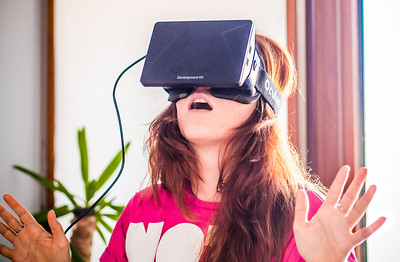
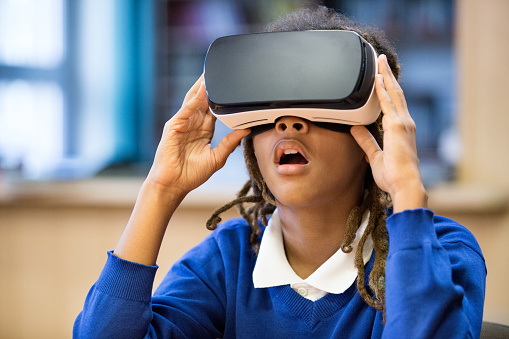
(The above images are royalty-free, but my students looked like this when viewing their sites. I couldn’t take photos as they were using my phone/camera to view CoSpaces.)
Plot – Story Arc: Storyboard That
I really love using Storyboard That, a digital tool aimed at students who want to create a storyboard to communicate. The online-based platform lets anyone easily create a storyboard in order to tell a story in a visually engaging way. For this project, I assigned the Plot Diagram and Narrative Arc template for students to use, a more complex one for older students and a less complex one for younger students.
Benefits/Results
From observing my learners for the multiple hours they were engaged in this project, I found it had the following benefits:
- Full and total engagement,
- Increased creativity and use of imagination (more than simple, written work) ,
- Student voice and choice,
- Learning how to use new content creation technologies,
- Learning the mechanics of writing,
- Project management (due to the long term nature of this project),
- Joy and pride in learning.
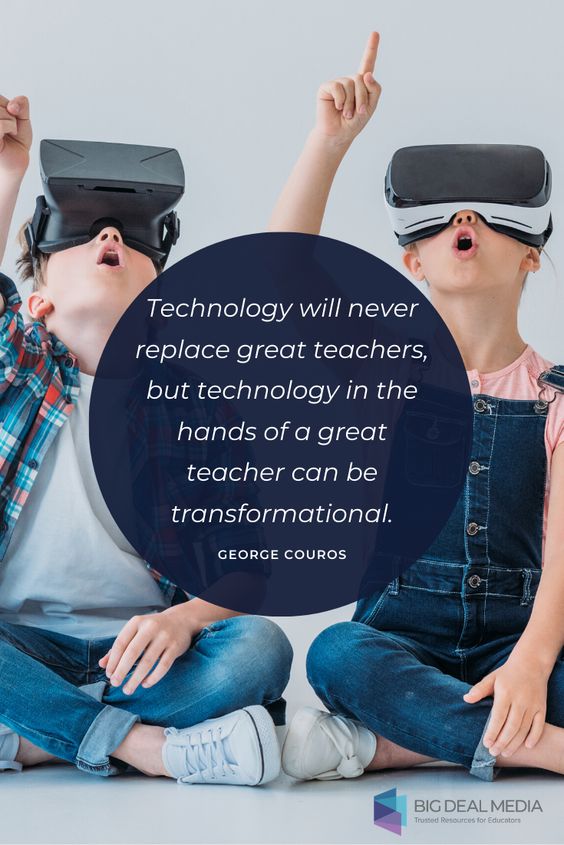
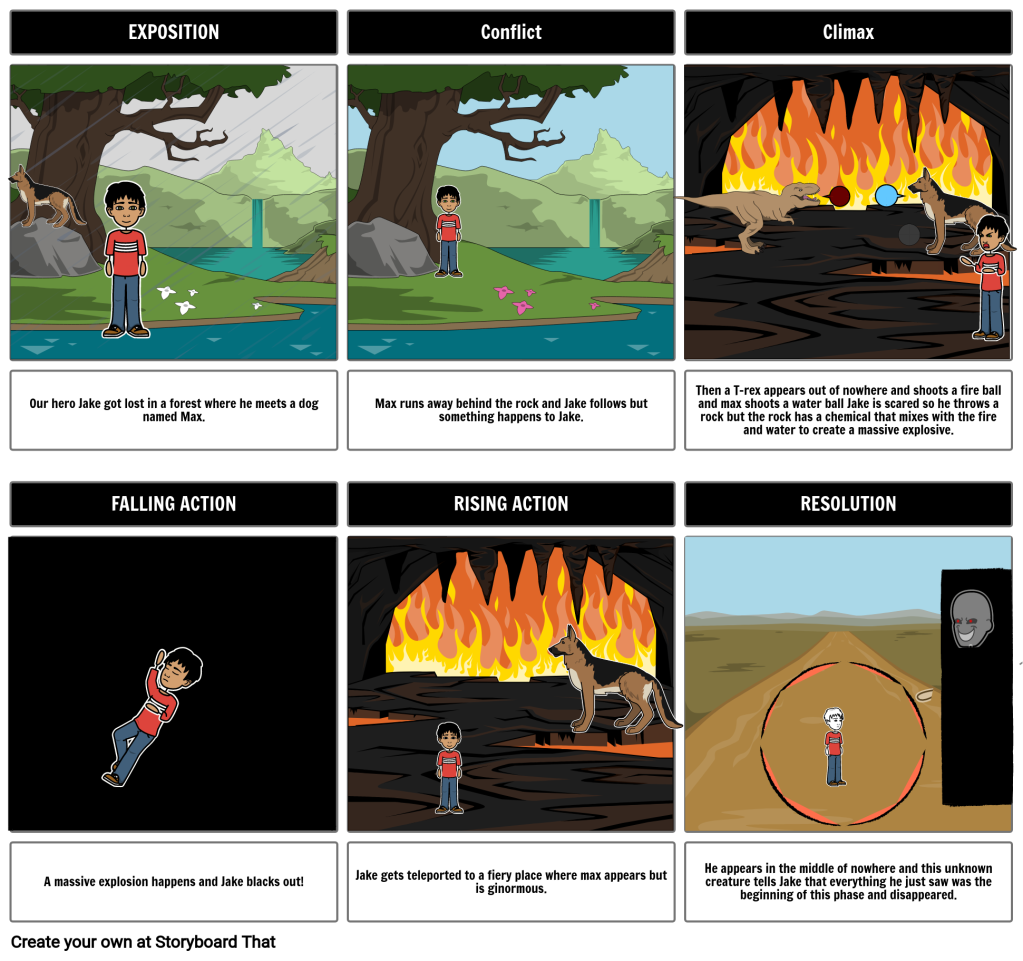
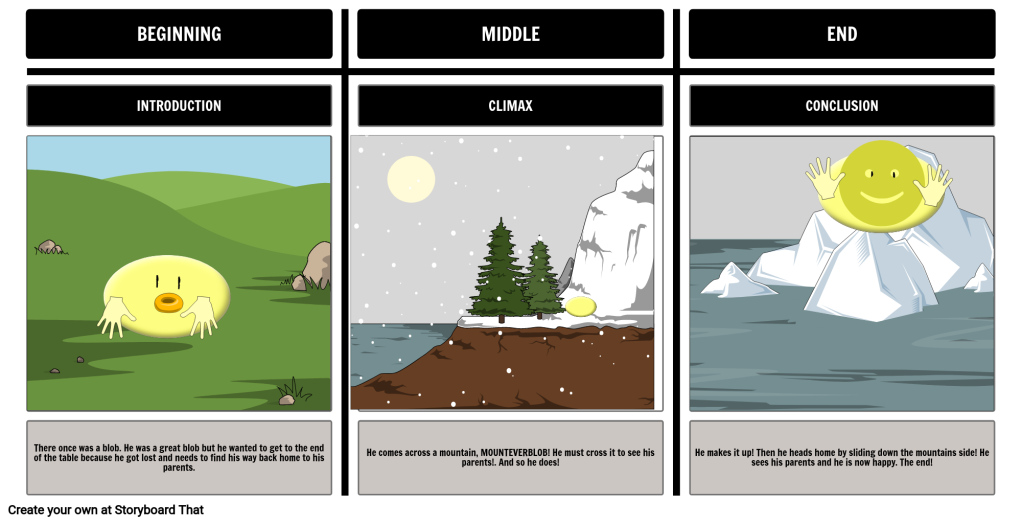
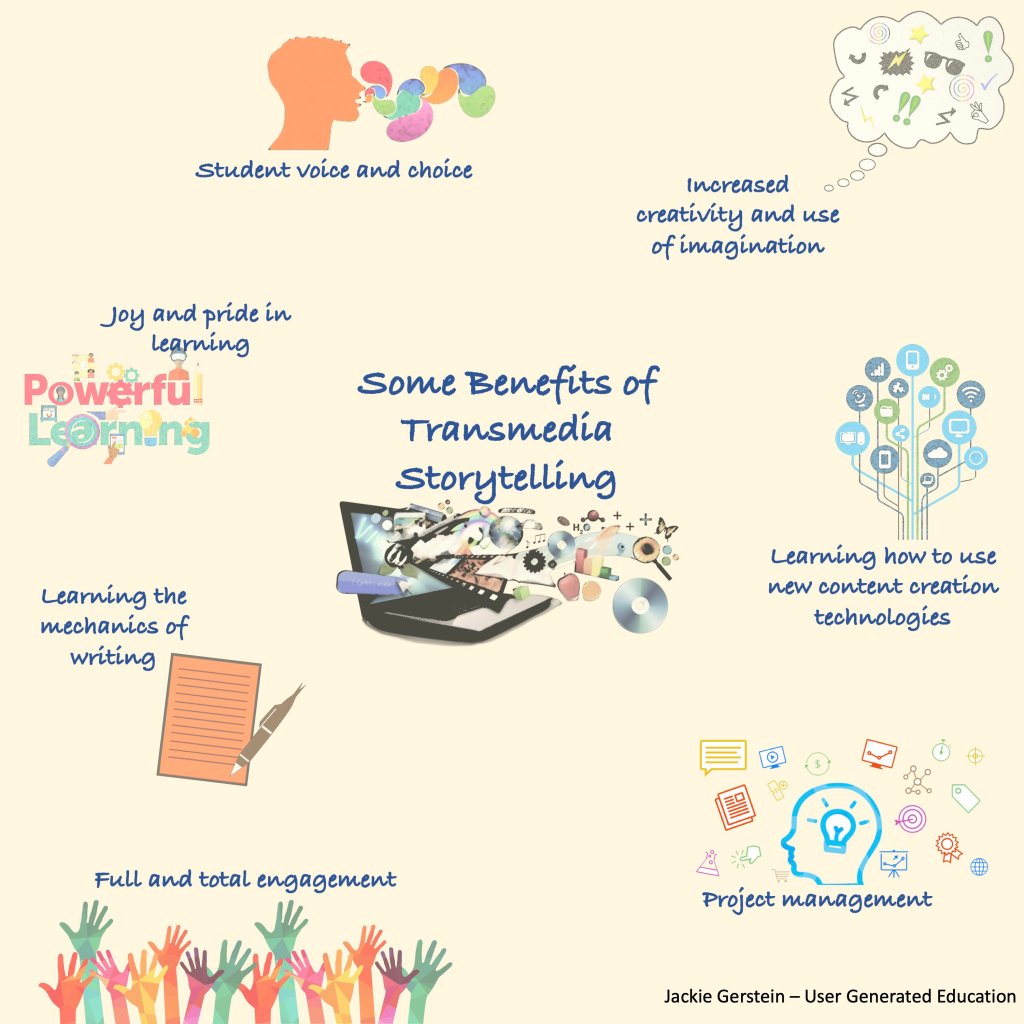

Leave a comment